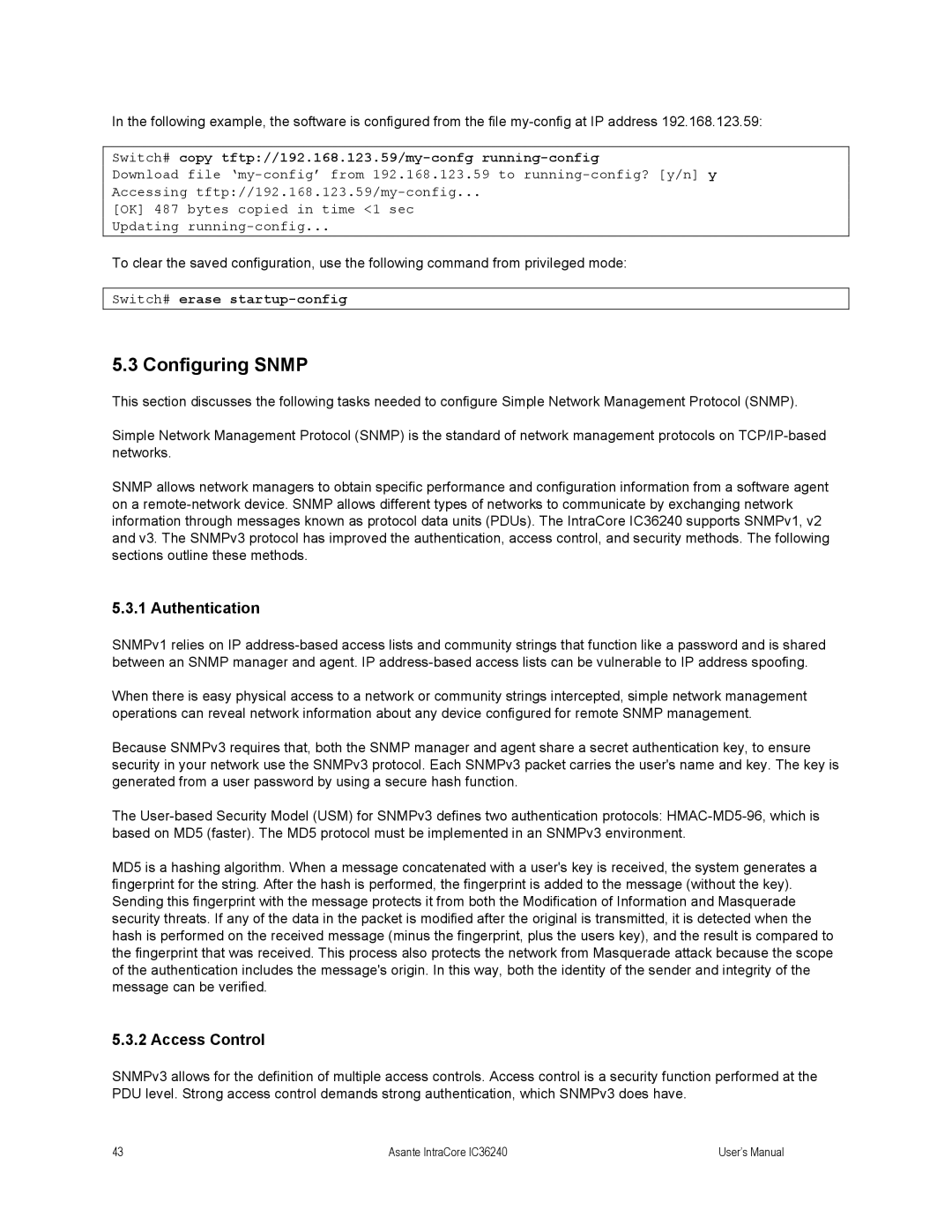
In the following example, the software is configured from the file
Switch# copy tftp://192.168.123.59/my-confg running-config
Download file
Accessing
[OK] 487 bytes copied in time <1 sec
Updating
To clear the saved configuration, use the following command from privileged mode:
Switch# erase startup-config
5.3 Configuring SNMP
This section discusses the following tasks needed to configure Simple Network Management Protocol (SNMP).
Simple Network Management Protocol (SNMP) is the standard of network management protocols on
SNMP allows network managers to obtain specific performance and configuration information from a software agent on a
5.3.1 Authentication
SNMPv1 relies on IP
When there is easy physical access to a network or community strings intercepted, simple network management operations can reveal network information about any device configured for remote SNMP management.
Because SNMPv3 requires that, both the SNMP manager and agent share a secret authentication key, to ensure security in your network use the SNMPv3 protocol. Each SNMPv3 packet carries the user's name and key. The key is generated from a user password by using a secure hash function.
The
MD5 is a hashing algorithm. When a message concatenated with a user's key is received, the system generates a fingerprint for the string. After the hash is performed, the fingerprint is added to the message (without the key). Sending this fingerprint with the message protects it from both the Modification of Information and Masquerade security threats. If any of the data in the packet is modified after the original is transmitted, it is detected when the hash is performed on the received message (minus the fingerprint, plus the users key), and the result is compared to the fingerprint that was received. This process also protects the network from Masquerade attack because the scope of the authentication includes the message's origin. In this way, both the identity of the sender and integrity of the message can be verified.
5.3.2 Access Control
SNMPv3 allows for the definition of multiple access controls. Access control is a security function performed at the PDU level. Strong access control demands strong authentication, which SNMPv3 does have.
43 | Asante IntraCore IC36240 | User’s Manual |
